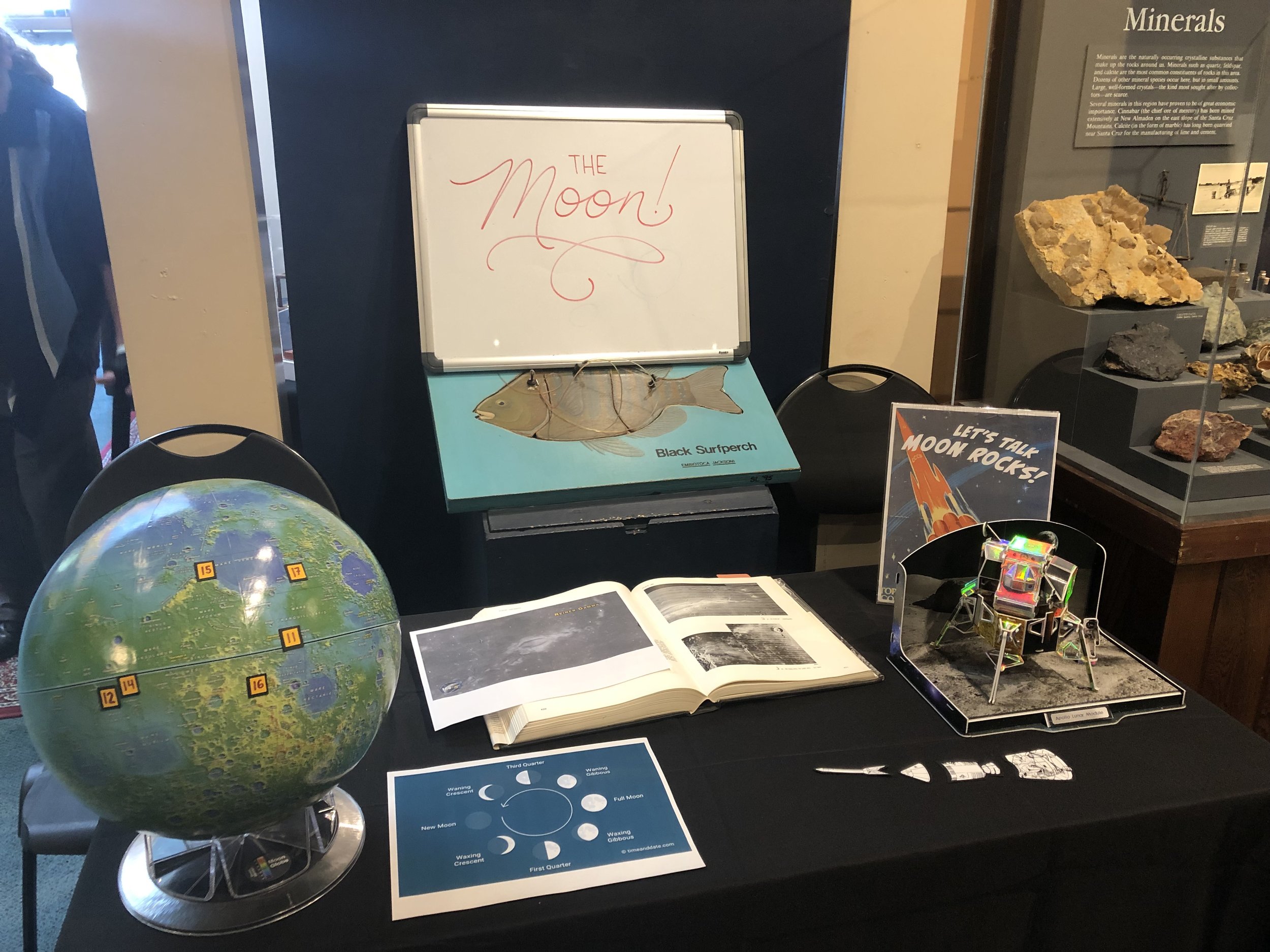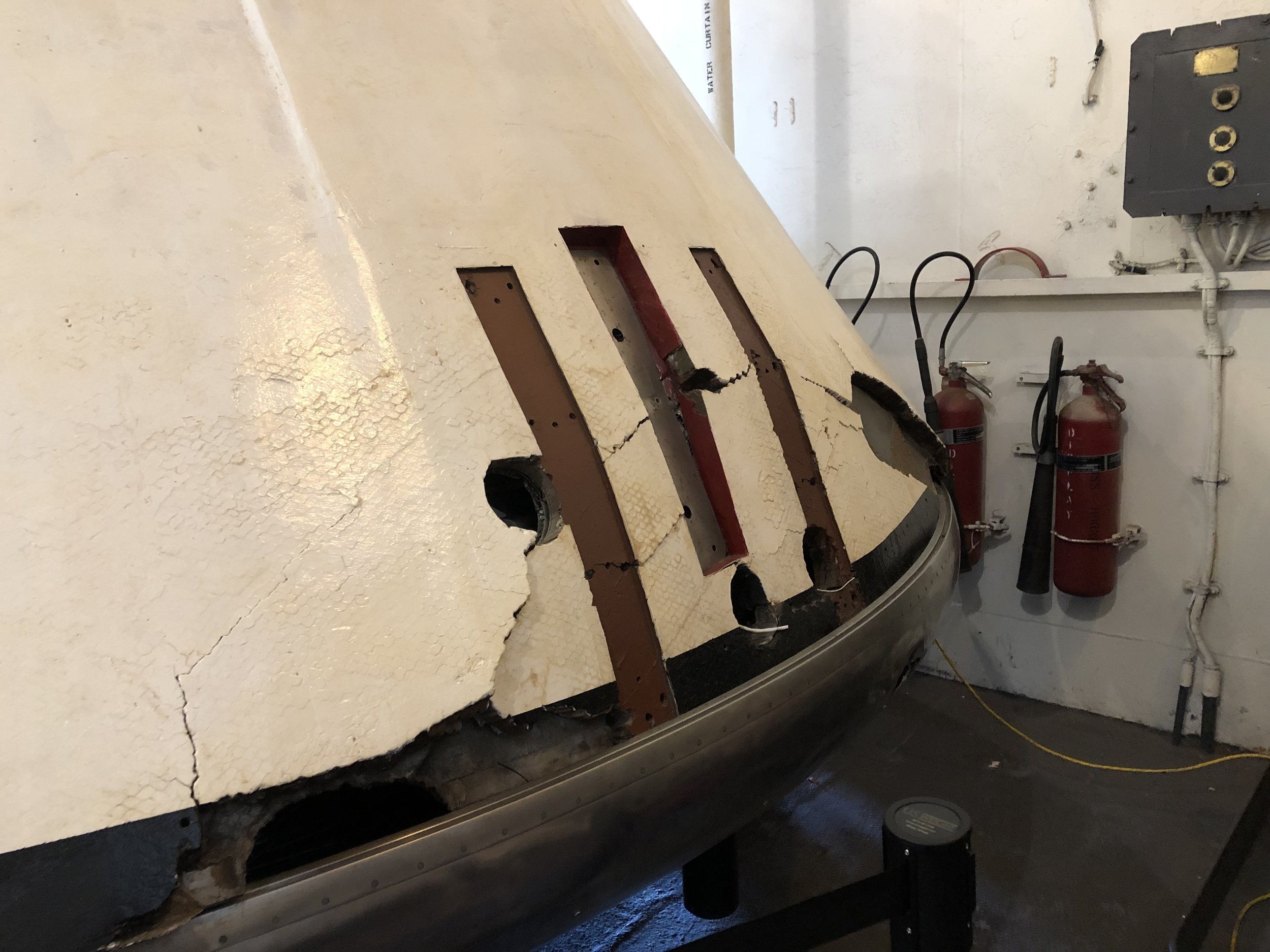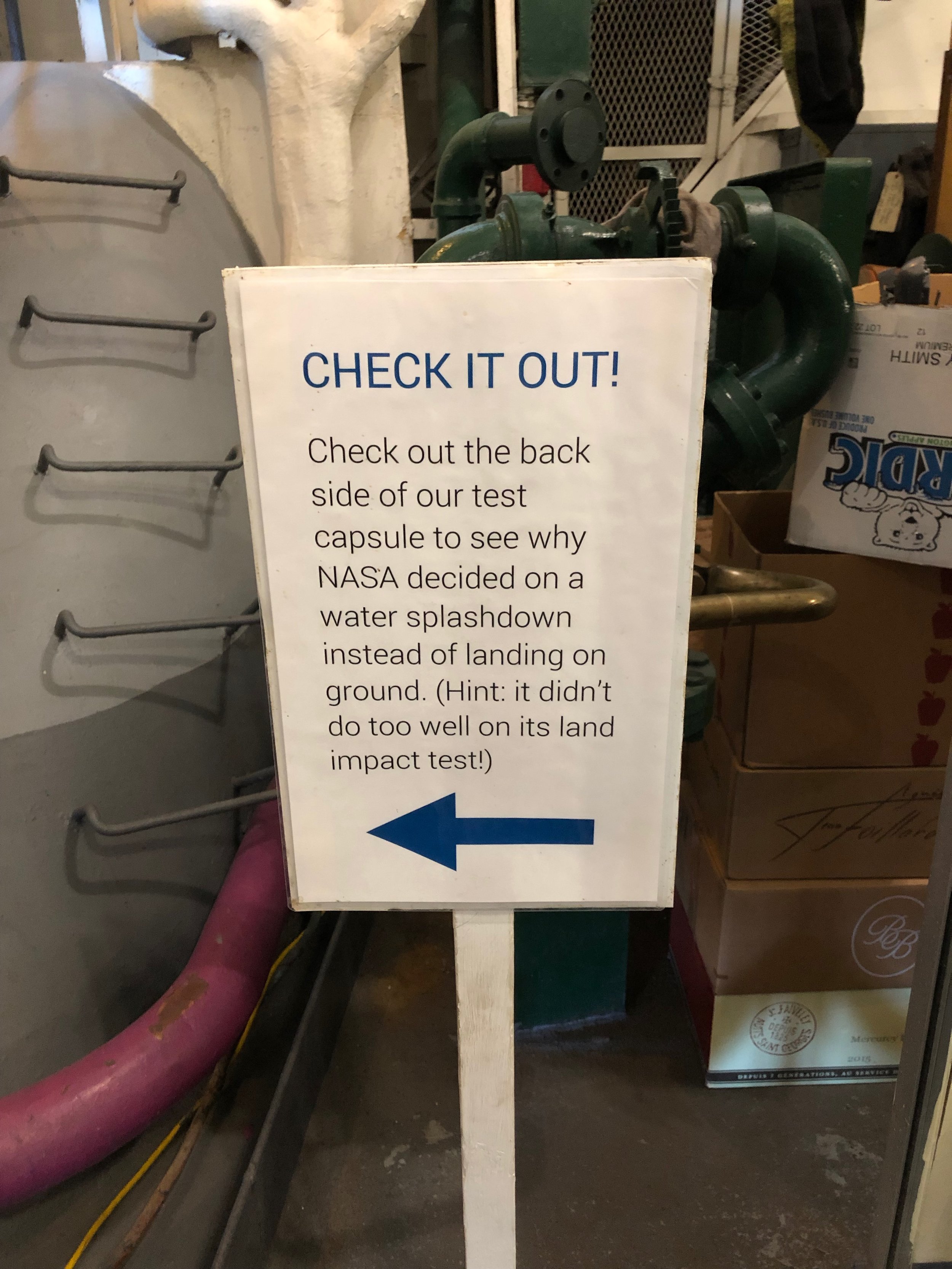Me and Rachel (a fellow grad student) hosted a table on July 20th, 2019, at the Santa Cruz Museum of Natural History’s Apollo 11 50th anniversary event, “A Trip to the Moon.”
Our table! The black surfperch display that we were next to is unrelated, haha.
At our table, we had a topographic globe of the Moon complete with little labels for the landing sites of each of the Apollo missions, a chart to explain how phases of the Moon work, a coffee-table-style book of Lunar Orbiter photos, a model of the Lunar Module, and I made little cutouts of the components of the Apollo spacecraft so I could show how the components had to rearrange after launch.
Our table’s (for some reason Soviet-themed) little title poster. We ended up talking about the Moon as a whole, rather than Moon rocks. Dammit Jim, I’m a physicist, not a geologist!
The three-hour event was VERY busy! We were talking to people the entire time. Having the Moon globe helped a lot; it prompted a lot of good questions. Many people know that we have seen the far side of the Moon with spacecraft, but don’t know much about it. When they would hold the Moon globe and spin it around to see the far side, their reaction was often “Whoa! The far side looks so different than the side we see at night!” This was a perfect segue into talking about what makes the maria and the highlands so different.
A favorite of mine was explaining how the Apollo spacecraft transformed from the complete package atop the Saturn V to the little capsule that splashed down in the ocean. Using the cutouts that I made, I was able to explain how the spacecraft had to split apart and turn around to extract the Lunar Module before heading to the Moon. The amazement that people got from finding this out was so fun!
Thank you to the Santa Cruz Museum of Natural History for hosting A Trip to the Moon, and to Rachel for being my table co-host :)
For more on Apollo 11, I HIGHLY recommend the website apolloinrealtime.org/11 and the 2019 movie Apollo 11.







